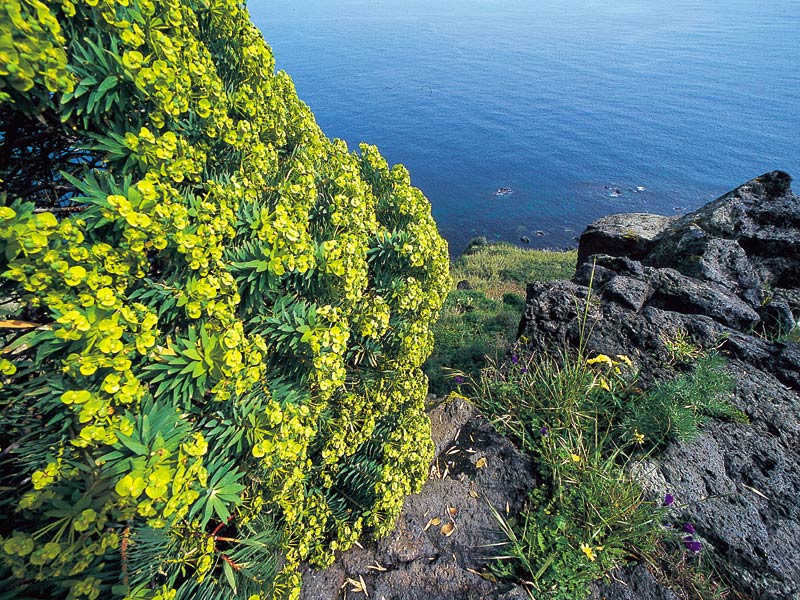
Timpa di Acireale Nature Reserve
This post is also available in:
 Italiano (Italian)
Italiano (Italian)
At the foot of Acireale, on lava ridge overlooking the blue sea, there’s the Nature Reserve of Timpa di Acireale.
The territory, including Acque Grandi (north of Capomulini) to Santa Maria degli Ammalati (a district of Acireale) along the coastline, includes a 262-ft high promontory close to the sea and covered by a luxuriant vegetation with ivy, spurges (Euphorbia) and carob trees.
Due to its high naturalistic, geological, faunal and vegetative value, this area was officially acknowledged as an Oriented Nature Reserve in 1999 and entrusted to the State Forestry Company.
Timpa is home to some typical Mediterranean pioneer plants, shrubs and spurge (Euphorbia) growing in reddish shrubs and yellow-green flower bouquets.
Some areas, such as that of Santa Caterina, features thick vegetation favoured by several water sources which eventually reach the Ionian Sea. The most secluded and remote cliffs are covered with ivy, old man’s beard, caper bushes and Barbary figs.
The scrub is made of carob trees and Mediterranean buckthorn, mastic trees, butcher’s broom and myrtle, while in the most impenetrable areas, there are thick groves of common smilax and wild asparagus.
The paths inside the reserve are lined with groves of trees of heaven (Alianthus) and paper mulberry – exotic species introduced by man. The lower areas, on the other hand, are used for agriculture and some of them have been abandoned.
The tree spurge (Euphorbia)
During the hot season, the shrubs of this plant look like wooden reddish candelabra. The phenomenon is known as “aestivation”, namely a sort of a defence against aridity and droughts. Euphorbia is a shrub with a round shape which in suitable climatic and geographical conditions, such as those of the Tyrrhenian coast, can grow up to 10 ft, taking on a tree shape.
Its lanceolate leaves are light green; at the beginning of summer, they turn red and then fall, leaving scars on the woody branches.
Flowers appears in yellow-green bunches: what might appear as petals are actually bracts (transformed and coloured leaves) which, as a whole, give the illusion of a flower (pseudo-flower); the real flowers are limited to the area of the protruding sexual organs at the intersection of the floral bracts. The pseudo-flower is called “ciato” or “ciazio”, due to its cup-like shape.
All parts of the plant contain stinging latex that can cause slight skin irritation. Euphorbia grows in the sunniest stretches of the Sicilian coasts, forming impressive scrubs in the semi-rupestrian areas together with wild olive trees.
It is usually found at altitudes between 0 and 1.312 ft, abundant in Sicily and Sardinia but hardly ever-growing anywhere else in the Italian Peninsula.
Photo and text source:
http://www.regione.sicilia.it/agricolturaeforeste/azforeste/riserve.asp?id=7&sez=flora
https://www.guidasicilia.it/route/la-riserva-naturale-orientata-della-timpa-di -acireale / 1002307
Photo source:
http://www.regione.sicilia.it/agricolturaeforeste/azforeste/riserve.asp?id=7&sez=flora
This post is also available in:
 Italiano (Italian)
Italiano (Italian)
Contatti
